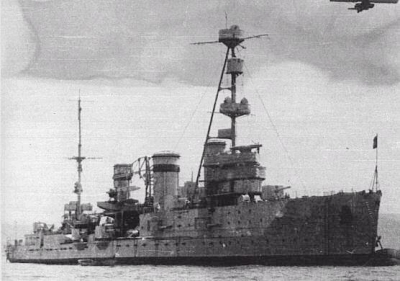The Siege of Sevastopol also known as the Defence of Sevastopol (Russian: , romanized: Oborona Sevastopolya) or the Battle of Sevastopol (German: Schlacht um Sewastopol) was a military engagement that took place on the Eastern Front of the Second World War. The campaign was fought by the Axis powers of Germany and Romania against the Soviet Union for control of Sevastopol, a port in the Crimea on the Black Sea. On 22 June 1941 the Axis invaded the Soviet Union during Operation Barbarossa. Axis land forces reached the Crimea in the autumn of 1941 and overran most of the area. The only objective not in Axis hands was Sevastopol. Several attempts were made to secure the city in October and November 1941. A major attack was planned for late November, but heavy rains delayed it until 17 December 1941. Under the command of Erich von Manstein, Axis forces were unable to capture Sevastopol during this first operation. Soviet forces launched an amphibious landing on the Crimean peninsula at Kerch in December 1941 to relieve the siege and force the Axis to divert forces to defend their gains. The operation saved Sevastopol for the time being, but the bridgehead in the eastern Crimea was eliminated in May 1942.
After the failure of their first assault on Sevastopol, the Axis opted to conduct siege warfare until the middle of 1942, at which point they attacked the encircled Soviet forces by land, sea, and air. On 2 June 1942, the Axis began this operation, codenamed Strfang (Sturgeon Catch). The Soviet Red Army and Black Sea Fleet held out for weeks under intense Axis bombardment. The German Air Force (Luftwaffe) played a vital part in the siege, its 8th Air Corps bombing the besieged Soviet forces with impunity, flying 23,751 sorties and dropping 20,528 tons of bombs in June alone. The intensity of the German airstrikes was far beyond previous German bombing offensives against cities such as Warsaw, Rotterdam or London. At the end of the siege, there were only 11 undamaged buildings left in Sevastopol. The Luftwaffe sank or deterred most Soviet attempts to evacuate their troops by sea. The German 11th Army suppressed and destroyed the defenders by firing 46,750 tons of artillery ammunition on them during Strfang.
Finally, on 4 July 1942, the remaining Soviet forces surrendered and the Germans seized the port. The Soviet Separate Coastal Army was annihilated, with 118,000 men killed, wounded or captured in the final assault and 200,481 casualties in the siege as a whole for both it and the Soviet Black Sea Fleet. Axis losses in Strfang amounted to 35,866 men, of whom 27,412 were German and 8,454 Romanian. With the Soviet forces neutralized, the Axis refocused their attention on the major summer campaign of that year, Case Blue and the advance to the Caucasus oilfields.
Chervona Ukraina (Ukrainian: "Червона Україна") was an Admiral Nakhimov-class light cruiser of the Soviet Navy assigned to the Black Sea Fleet. During World War II, she supported Soviet forces during the Sieges of Odessa and Sevastopol before being sunk at Sevastopol on 12 November 1941 by German aircraft. She was raised in 1947 and was used as a training hulk before becoming a target ship in 1950.

1941Nov, 12
World War II: The Soviet cruiser Chervona Ukraina is destroyed during the Battle of Sevastopol.
Choose Another Date
Events on 1941
- 17Mar
Franklin D. Roosevelt
In Washington, D.C., the National Gallery of Art is officially opened by President Franklin D. Roosevelt. - 26Jul
French Indochina
World War II: In response to the Japanese occupation of French Indochina, US President Franklin D. Roosevelt orders the seizure of all Japanese assets in the United States. - 17Sep
Great Patriotic War
World War II: A decree of the Soviet State Committee of Defense, restoring Vsevobuch in the face of the Great Patriotic War, is issued. - 12Dec
Hungary
World War II: The United Kingdom declares war on Bulgaria. Hungary and Romania declare war on the United States. India declares war on Japan. - 14Dec
Thailand
World War II: Japan signs a treaty of alliance with Thailand.

 English
English  español
español  français
français  português
português  русский
русский  العربية
العربية  简体中文
简体中文 